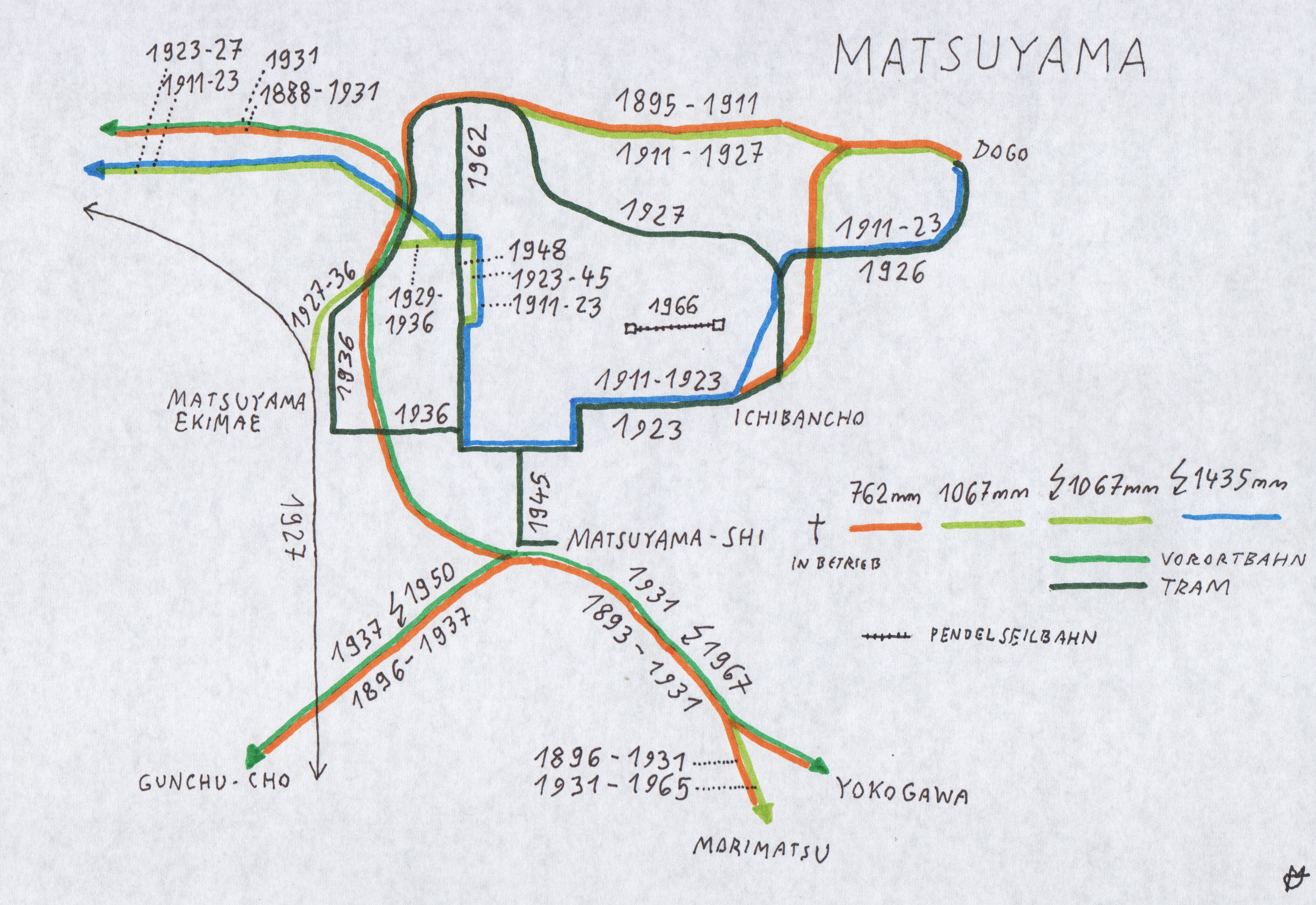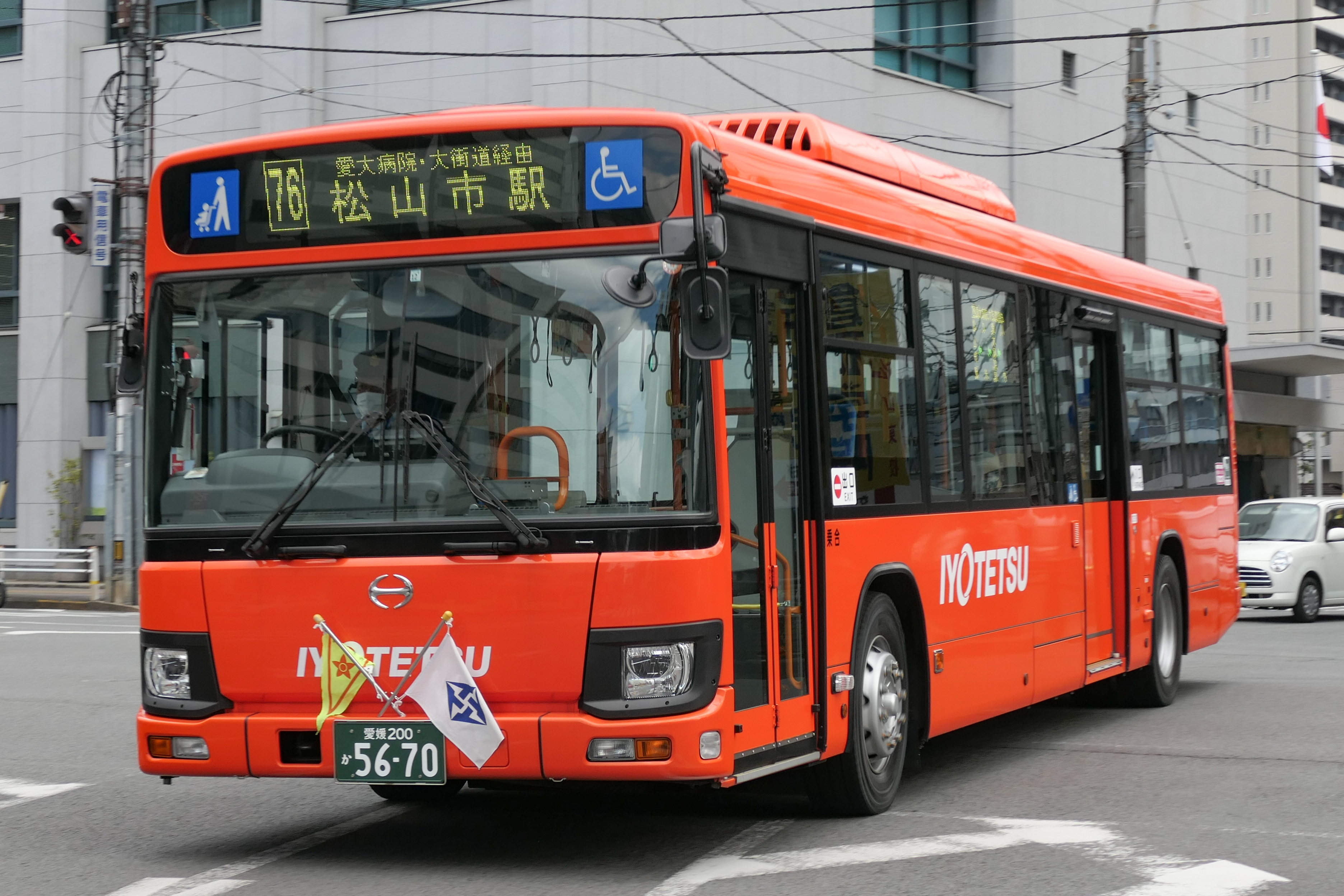Iyotetsu 700 Series MoHa715 Interior 20080817 on:
[Wikipedia]
[Google]
[Amazon]
The is the main transport provider in Matsuyama, Ehime, Shikoku,
 Iyotetsu operates the following railway lines.
Iyotetsu operates the following railway lines.


 The company operates highway buses linking Matsuyama and the major cities of Japan, including Tokyo, Ōsaka, Fukuyama, Takamatsu,
The company operates highway buses linking Matsuyama and the major cities of Japan, including Tokyo, Ōsaka, Fukuyama, Takamatsu,
File:Iyotetsu-Series700-766.jpg, 700 series set 728 in December 2021
File:Iyo railway train 612.jpg, 610 series EMU set 612 in June 2006
File:Iyotetsu-Series3000-3504.jpg, 3000 series set 3010 in December 2021
File:Iyotetsu-Moha66.jpg, A MoHa 50 series tramcar
File:Iyotetsu2003_20210809.jpg, A MoHa 2000 series tramcar
File:Iyotetsu-Moha2102.jpg, A MoHa 2100 series tramcar
File:Iyotetsu-Moha5001.jpg, A MoHa 5000 series tramcar
File:Good-bye_Iyo103.jpg, An Iyotetsu 100 series train in 1984
File:Iyotetsu 300 series 303 20081009.JPG, An Iyotetsu 300 series train in October 2008
File:Iyotetsu601.JPG, An Iyotetsu 600 series train in March 2008
File:Iyotetsu825.JPG, An Iyotetsu 800 series train in March 2008
 Iyo Railway also operates the ''
Iyo Railway also operates the ''
Japan
Japan ( ja, 日本, or , and formally , ''Nihonkoku'') is an island country in East Asia. It is situated in the northwest Pacific Ocean, and is bordered on the west by the Sea of Japan, while extending from the Sea of Okhotsk in the north ...
. The company operates railway, tram, and bus lines, and also has many subsidiaries, which include a bank, department stores, travel agencies, and various other businesses.
History
The company was founded on September 14, 1887, and its Takahama railway line, the first in Shikoku, was opened on October 28, 1888. In addition to being the first railway in Shikoku, it was also the third private railway in Japan. It is named for the former Iyo Province. The first tramway was electrified in 1911, whilst the entire tram network was changed from gauge to gauge in 1923.Brown, Colin (2007). "Tramway Opening and Closure Dates". ''Bullet-In'' Issue 61, p.25Services
Railway
Takahama Line
This 9.4 km line opened as gauge in 1888, and was regauged to , double-tracked to Baishinji (8.2 km) and electrified at 600 V DC in 1931. This line is still electrified at 600 V DC, not increased to 750 V DC as Yokogawara or Gunchū Lines. The Takahama Line and the Ōtemachi Tramline have one of the few remaining rail/tram level crossings in Japan.Yokogawara Line
This 13.2 km line opened as gauge in 1893, and was regauged to in 1931. Steam locomotives were replaced by diesel traction in 1954, and the line was electrified at 750 V DC in 1967. Through services to and from the Takahama line commenced in 1981.Gunchū Line
The initial 10.7 km line was opened as a gauge line in 1896 by the South Iyo Railway. Iyotetsu acquired it through merger in 1900. It was regauged to in 1937. In 1939, a 600 m extension opened to Gunchuko, enabling a transfer to JR Iyo station (today on the Yosan Line. The line was electrified in 1950 at 600 V DC, increased to 750 V DC in 1976. CTC signalling was introduced on the rail system in 1993.Former connecting lines
A 4.4 km 762 mm gauge line opened from Iyo Tachibana (on the Takahama line) to Morimatsu in 1896, the line being regauged to 1,067 mm in 1931. The line closed in 1965.Tram
Iyotetsu operates the , a system of five interconnected lines.

Lines
There are officially five lines, as follows. * Jōhoku Line: Komachi — Heiwadōri 1 * Jōnan Line: Dōgo Onsen — Nishi-Horibata, Kamiichiman — Heiwadōri 1 * Honmachi Line: Nishi-Horibata — Hommachi 6 * Ōtemachi Line: Nishi-Horibata — JR Matsuyama Station — Komachi * Hanazono Line: Matsuyama City Station — Minami-HoribataRoutes
There are five routes regularly in service by using one or more lines above.Bus
 The company operates highway buses linking Matsuyama and the major cities of Japan, including Tokyo, Ōsaka, Fukuyama, Takamatsu,
The company operates highway buses linking Matsuyama and the major cities of Japan, including Tokyo, Ōsaka, Fukuyama, Takamatsu, Tokushima
is a prefecture of Japan located on the island of Shikoku. Tokushima Prefecture has a population of 728,633 (1 October 2019) and has a geographic area of 4,146 km2 (1,601 sq mi). Tokushima Prefecture borders Kagawa Prefecture to the north, E ...
, and Kōchi
Kochi is a city in Kerala, India.
Kochi or Kōchi may also refer to:
People
* Kochi people, a predominantly Pashtun nomadic people of Afghanistan
* , a Japanese surname:
** Arata Kochi (born 1948 or 1949), Japanese physician and World Health Org ...
. It also operates a local network in and around the city.
Rolling stock
Heavy rail
*Iyotetsu 700 series
The is an electric multiple unit (EMU) train type operated by the private railway operator Iyo Railway (Iyotetsu) in Matsuyama, Ehime, Japan, since 1987.
Design
The trains were converted from former Keio 5000 series EMU cars between 1987 and 1 ...
two/three-car EMU sets (since 1987, converted from former Keio 5000 series
The is an electric multiple unit (EMU) train type which was formerly operated by Keio Corporation in Japan and first introduced in 1963. Built in batches by Nippon Sharyo, Tokyu Car Corp, and Hitachi, it was the recipient of the fourth Laurel P ...
trains)
* Iyotetsu 610 series two-car EMU sets (since 1995)
* Iyotetsu 3000 series three-car EMU sets (since 2009, converted from former Keio 3000 series
The was a DC electric multiple unit (EMU) train type operated by Keio Corporation on the Keio Inokashira Line in Japan from 1962 until 2011.
Design
The 3000 series was the first Keio rolling stock to use completely stainless steel body construc ...
trains)
Trams
* MoHa 50 series (since 1951) * MoHa 2000 series (since 1964) * MoHa 2100 series (since 2002) * MoHa 5000 series (from September 2017) Two 5000 series low-floor tramcars (numbers 5001 and 5002) were delivered in September 2017, scheduled to enter revenue service on 21 September 2017.Former rolling stock
*Iyotetsu 100 series
The is the main transport provider in Matsuyama, Ehime Prefecture, Ehime, Shikoku, Japan. The company operates railway, tram, and bus lines, and also has many subsidiaries, which include a bank, department stores, travel agencies, and various ot ...
* Iyotetsu 300 series
The is the main transport provider in Matsuyama, Ehime, Shikoku, Japan. The company operates railway, tram, and bus lines, and also has many subsidiaries, which include a bank, department stores, travel agencies, and various other businesses.
...
(until 2008)
* Iyotetsu 600 series (until 2008)
* Iyotetsu 800 series (until 2010, converted from former Keio 2010 series trains)
''Botchan Ressha''
 Iyo Railway also operates the ''
Iyo Railway also operates the ''Botchan Ressha
The , or simply ''Botchan'', is a diesel-powered replica of a small-gauge steam locomotive installed in the city of Matsuyama, Ehime, Japan in 1888 as the original Iyo Railway, which was the first railway company in Shikoku and third in the nati ...
'', diesel-powered replicas of the original Iyotetsu locomotives, well-known from Natsume Sōseki's famous 1906 novel, ''Botchan
is a novel written by Japanese author Natsume Sōseki in 1906. It is one of the most popular Japanese novels, read by many during their school years. The central theme of the story is morality, but the narrator serves up this theme with gener ...
''. The current Botchan Ressha, operating on two of the city lines since 2001, reproduces the atmosphere of early train travel in Matsuyama.
See also
* List of railway companies in Japan *List of light-rail transit systems
The following is a list of cities that have current tram/streetcar (including heritage trams/heritage streetcars), or light rail systems as part of their regular public transit systems. In other words, this list only includes systems which ...
* Track gauge conversion
Gauge conversion is the changing of one railway track gauge (the distance between the running rails) to another.
Sleepers
If tracks are converted to a narrower gauge, the existing sleepers (ties) may be used. However, replacement is required if ...
* List of gauge conversions
This is a list of notable railway track gauge conversions, railway lines where the distance between a set of tracks is broadened or narrowed. Conversions to broader gauge are generally to accommodate heavier loads or for wider cars, while convers ...
References
This article incorporates material from the corresponding article in the Japanese Wikipedia.External links
* {{Authority control Railway companies of Japan Bus companies of Japan Tram transport in Japan Japanese companies established in 1887 Railway companies established in 1887 600 V DC railway electrification 750 V DC railway electrification